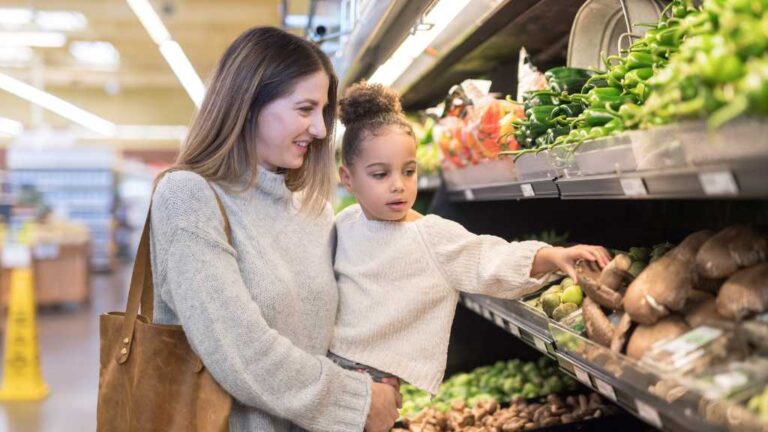Positive and negative reinforcement in ABA therapy are key tools to help children learn new skills. ABA therapy is a behavioral approach known as the gold standard in helping children and families touched by autism spectrum disorder manage some of the challenges associated with the condition. In some cases, reinforcement in ABA therapy can also improve symptom management of other related disorders.
Positive and negative reinforcement help to shape conduct in children who experience behavioral difficulties, but they do so differently. ABA professionals have found that when the techniques are employed together, they are even more effective. It’s important to realize that negative reinforcement in ABA therapy doesn’t mean punishment!
This blog post about positive and negative reinforcement will explore how they are commonly used in ABA therapy. We will also discuss how these behavioral modification techniques can help individuals on the spectrum reach their fullest potential. If you’re ready to learn more about shaping behavior, keep reading!
What is reinforcement in ABA therapy?
In ABA therapy, positive reinforcement increases desired behavior by associating it with a reward. This reward or reinforcement can be anything from verbal praise to tangible items like toys or healthy snacks. Negative reinforcement, on the other hand, eliminates an undesirable condition after the appropriate behavior is displayed. This reinforcement style also functions to increase desired behaviors.
Both positive and negative reinforcement in ABA therapy are essential tools for success. They can both be used to positively influence behavioral outcomes in children with autism.
How can you use positive reinforcement effectively?
When receiving positive reinforcement in ABA therapy, children get the message through consequences that good things happen when they engage in productive, appropriate behaviors. Receiving positive reinforcement should be an enjoyable experience. When employed correctly, the child should feel celebrated for all their hard work! Positive reinforcement should be consistent, vibrant, and reliable.
What is negative reinforcement in ABA therapy?
Negative reinforcement, on the other hand, increases behavior by taking something unpleasant away. For example, an ABA therapist teaches a child to wash their hands. The child does the task well but hates the feeling of having wet hands afterward. When the child completes the task, the therapist helps the child dry their hands immediately with a towel to remove the wetness.
Doing this reinforces the idea that a towel is used to dry hands after washing, which leads to feeling better. In this case, by absorbing the uncomfortable moisture (removing the condition), the child learns that drying hands with a towel is practical and beneficial. This will lead them to reach for a towel in the future, therefore increasing the likelihood of the behavior.
It is important to note that while negative reinforcement is often helpful, many ABA agencies predominantly rely on positive reinforcement to effect change in clients. In the event a punishment procedure is added to a child’s therapy plan, it will have to be approved by the parents after being carefully considered. Providers typically select punishment procedures as the last option and often reserve them to avoid severe, detrimental behaviors like self-injury or severe aggression.
How do positive and negative reinforcement work together?
RBTs (Registered Behavior Technicians) and BCBAs (Board Certified Behavior Analysts) are ABA experts specializing in behavior psychology. Their work generally involves observing a child’s behavior, determining what is reinforcing it, and designing a plan that makes life easier for the child with their challenges in mind. At times they will use positive and negative reinforcement in ABA therapy together to promote change.
For example, if a child is engaging in the desired behavior, such as participating in circle time, and wants to avoid having to leave the group due to disruptive behavior, the behavior of appropriate sitting would be reinforced. The therapist would give the child frequent breaks, snacks, or lots of verbal praise for every positive interval of proper sitting. Over time, the sitting intervals would be increased, and the reinforcement would fade.
When to use positive reinforcement or negative reinforcement in ABA therapy?
The decision to use positive reinforcement vs. negative reinforcement should be based on the individual’s goals and preferences. Positive reinforcement is most effective for teaching new skills, while negative reinforcement is most helpful for reducing problem behaviors. However, every child receiving treatment is unique, and some may respond better to one type of reinforcement than the other.
How do you know if reinforcement is working for your child?
Develop a new awareness of your child’s habits and track any behavioral changes you observe to determine if reinforcement is working for your child. Keeping track of the frequency and intensity of the desired behavior is also essential to measure efficacy. You will know the reinforcement works if you see an increase in the desired behavior.
For example, if your child is engaging in less self-injurious behavior, this could signify that reinforcement is effective. If they behave more appropriately, you will also know the reinforcement is working.
Additionally, when assessing the efficacy of reinforcement in ABA, it’s also important to consider any other behavioral changes. This includes those that are not being targeted for change. For example, if your child becomes more naturally engaged in their surroundings or makes more eye contact, these could also be signs that reinforcement is working.
Ultimately, it’s essential to consult with an ABA professional to get an expert opinion on whether reinforcement is adequate for your child with autism. Discuss any findings with your assigned BCBA. Use this time with them to explore any concerns or ask any critical questions you may have about treatment.
What are common mistakes providers make when using positive reinforcement?
1. Providers select a reward that is not motivating to the individual. It is crucial to find out what the person enjoys and use those activities or objects as rewards.
2. Positive reinforcement is used too frequently or for too long. This can lead to satiation, where the person no longer finds the reinforcement rewarding, and the desired behavior decreases.
3. Reinforcement is not faded out gradually. The person does not learn to perform the desired behavior without being rewarded.
4. Some providers use punishment in combination with positive reinforcement, which can undermine the effectiveness of the reinforcement and actually increase problem behavior.
What are common mistakes providers make when using negative reinforcement in ABA therapy?
1. Providers may use too much negative reinforcement, leading people with autism to feel overwhelmed and stressed.
2. It may be used for behaviors that are not genuinely problematic, such as asking too many questions or fidgeting.
3. Providers may not pair negative reinforcement with positive reinforcement, which is essential for helping people with autism feel motivated to change their behavior.
Avoiding these common mistakes when implementing negative reinforcement is crucial to ensure that the therapy remains helpful and does not become problematic.
How does integrating positive and negative reinforcement benefit children with autism long-term?
Applying both positive and negative reinforcement in ABA therapy is more effective than just one method. This is because it allows for a greater range of behaviors to be addressed and helps reduce the likelihood of unwanted behaviors in the future.
In addition, using both positive and negative reinforcement in ABA therapy has been shown to produce longer-lasting results than just one or the other. This is because it helps to create a stronger association between desired behaviors and positive consequences, making it more likely that those behaviors will be repeated.
Integrating positive and negative reinforcement in ABA therapy also effectively improves long-term communication and social skills in children with autism.
Why trust ABA therapy?
Behavior modification through reinforcement is an incredibly effective tool for modifying conduct and increasing participation in children with autism. It is foundational in ABA therapy and an integral part of why the approach successfully improves developmental outcomes in children with autism. If you’re looking for a way to help your child with autism, ABA therapy is definitely worth considering! It is evidence-based, covered by most insurances, and recommended by many medical and autism professionals.
Reinforcement and ABA Centers of America
If you’re curious about how ABA therapy works or want more information about these specific techniques, please don’t hesitate to contact ABA Centers of America. Our ABA professionals work with your child to ensure they receive cutting-edge treatment relative to their goals and compatible with their learning styles. Call us at (844) 923-4222 for a free consultation or visit abacenters.com.







